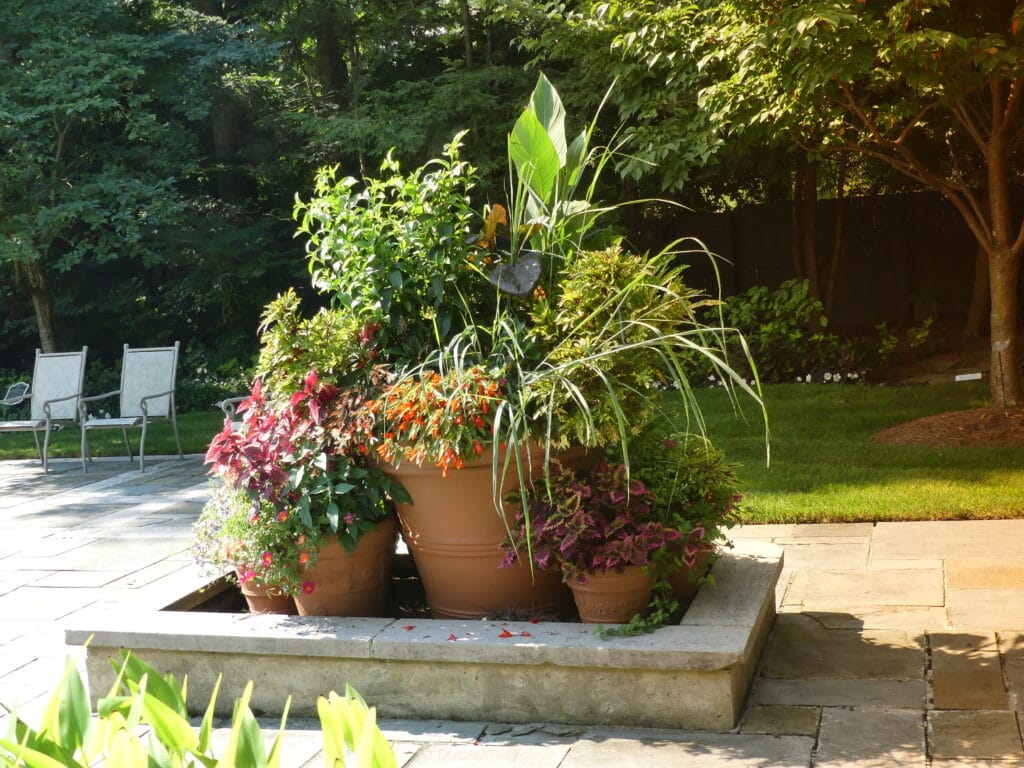Plants need nutrients just like we do- that’s where fertilizer for plants comes in.
Every gardener wants their plants to live long and healthy lives. As plant parents we know that plants have three fundamental needs- sunlight, water, and nutrients. Fertilizer is an important way of meeting one of these needs, as it enriches plant soil with nutrients, helping them grow to their fullest potential.
Container gardening has a special relationship with watering. Plants in containers require more water than plants in the ground, which means more nutrients are being washed out from the soil. This makes fertilizer an essential component in encouraging healthy strong container plant growth. Read on for best practices in fertilizer and container gardening.
How to Fertilize Plants – Understanding the Basics
- Always check the label on the fertilizer to know what quantities you need based on the size of the planter.
- When purchasing fertilizer, it is always best to buy fertilizer that is specific to the types of plants you have. For example, if you have summer flowering annuals, use fertilizer for blooming annual plants.
- The rule of thumb to follow with fertilizer in container plants: it is always better to under fertilize than over fertilize. When watering plants that are in planters, it is very easy to overfeed the plants with too much fertilizer. Fertilizer can become too concentrated in the smaller amount of soil in a planter leading to leaf burn and even killing the plant. Most fertilizer concentrations are for plants that are in the ground which considers the dispersion that the surrounding soil allows. In this case, you always want to use half the amount suggested per gallon of water. That being said, there may be a fertilizer that says “for house plants” or “containerized plants” that may have adjusted their ratio to water so it would not be necessary to half the amount.

Selecting the correct fertilizer for your planter is an essential step in plant care.

 Fertilizers for Plants in Traditional Planters
Fertilizers for Plants in Traditional Planters
Plants in traditional pots require you to manually water them, depending on the water needs of your specific plants. To account for the nutrients that are washed out every time you water your plant it’s important to adjust your fertilizer concentration.
- When starting out, incorporate a slow-release fertilizer. When plants are young, it is ideal to use a slow-release fertilizer to protect plants from getting too much fertilizer (mainly nitrogen).
- After the first two or three months, begin using a liquid or water-soluble fertilizer once a month based on the type of plant in the planter. Once your plants get bigger, they will be needing more nutrients especially if they are flowering, and the liquid or water-soluble fertilizer is easier to absorb and can be utilized quickly. This is especially important during the summer when container plants require more water and nutrients are washed out at a higher rate.

Traditional planters have a higher rate of nutrient run-off.
How often to fertilize Plants in TruDrop Containers
Unlike plants in traditional planters, plants in TruDrop planters have the benefit of access to a water reservoir that feeds them water as they require it. This means that the level of nutrient runoff is not as high as plants in traditional planters.
Depending on which Trudrop planter you have, your reservoir will hold many gallons of water and can provide a consistent slow feed of fertilizer. A typical fertilizer dilution is 1 Tablespoon fertilizer to 1 gallon of water. We recommend using 1Tablespooon fertilizer to 10 gallons of water ratio to add to your reservoir.
Even though the quantity is greatly diluted, it’s a little bit like eating a small amount of food all day rather than three full meals. The consistent low-dose feed works well because there is not the typical runoff that is expected when companies are coming up with amounts per gallon for fertilizer. If the fertilizer you are using recommends a higher quantity of fertilizer per gallon, use that quantity per 10 gallons. To determine how many gallons of water your TruDrop planter holds when full, you can check out our website and look at the specs information for your planter.
The important thing to keep in mind with TruDrop planters is that the self-watering component makes it significantly easier to manage plant nutrients and makes your plant less dependent on fertilizer. Using less fertilizer is also better for the environment. When fertilizer makes it into bays and other water resources it increases algae growth which ends up killing wildlife. The rule of thumb that it is better to under fertilize than over fertilize is especially important in this case, since the self-watering planter conserves more water than traditional planters, reducing nutrient run-off and minimizing the damaging effects of fertilizer on the environment.


A TruDrop One self-watering planter will conserve water and reduce nutrient run-off. The less the fertilizer, the better for the environment.
Now that you’ve learned the tips and tricks that go into fertilizing container plants you can keep your plants strong and healthy without worrying about leaf burn or overfeeding.



